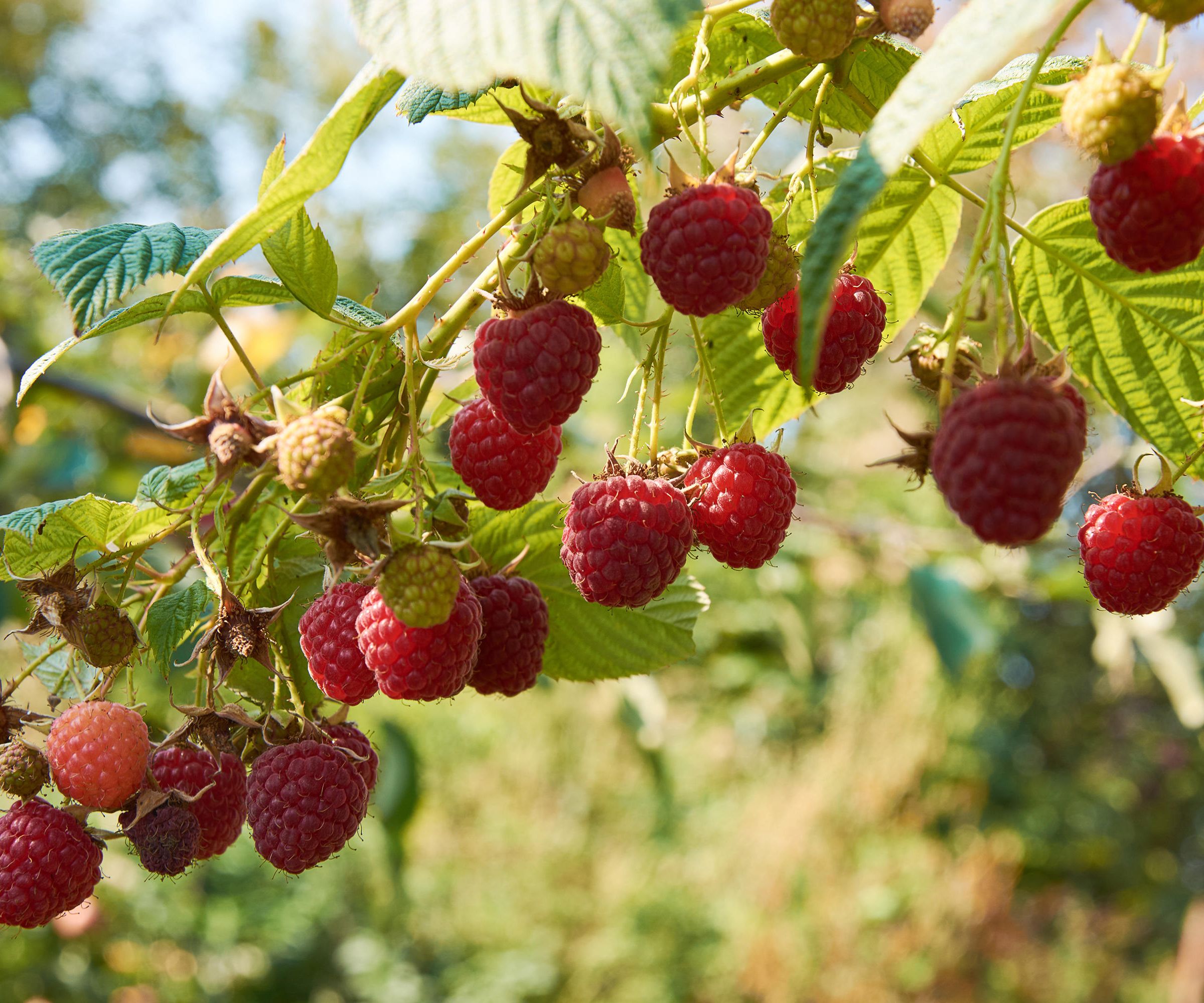When to transplant raspberries – for a bountiful raspberry patch
Find out the best time to transplant your raspberry plants for a perfect patch


Transplanting raspberries is a wonderful way to expand your raspberry patch and grow your raspberry harvest year on year. Knowing when to transplant raspberries is the perfect starting point for sharing these fruits.
While you may know how to grow raspberries, transplanting raspberries allows you to duplicate your perfect plants without having to purchase new seeds or starters. These fruiting bushes are pretty hardy, making them the ideal plant to learn how to transplant too.
Here, we look at when to transplant raspberries in your vegetable garden ideas so you can give your new plants the best chances of success.
When to transplant raspberries
'When transplanting raspberries, it is best to move them before or after fruiting so as not to stress the plant,' suggests Rachel Crow, garden editor for Homes & Gardens. 'While there are different raspberry varieties, most fruit in either summer or fall. Summer varieties produce larger fruit whereas fall fruiting crops produce smaller berries between the cooler months of August to October.
'Knowing which variety you have can help you to decide when the best time to transplant your raspberries is,' Rachel advises.
The best time to transplant raspberries is when they’re dormant. So, any time between fall and spring when they’re not fruiting or growing new leaves. Between October and February is ideal so long as the ground isn’t hard with frost.
Transplanting in early spring

The best time to transplant any raspberry plant is in early spring before the plants begin to sprout. While some leaves may have begun to grow, this is the ideal period before fruiting.
Design expertise in your inbox – from inspiring decorating ideas and beautiful celebrity homes to practical gardening advice and shopping round-ups.
'Transplanting raspberries in spring coincides with pruning raspberry bushes,' says Rachel. 'This makes spring the perfect season to deal with with the bulk of your raspberry plant care all at once. What's more, transplanting a pruned raspberry bush is much easier than a fully grown plant that you may have to wrestle with.'
Raspberries are also brilliant additions to plant in March, meaning that transplants from early spring will soon provide the perfect growing conditions to secure themselves as new budding plants.
Transplanting in late fall

'Transplanting raspberries in late fall when the plants are dormant is a great way to move the bushes in preparation for the following growing season,' says Rachel. 'When moving or transplanting raspberries during this period, however, ensure that they have finished fruiting for the year. This is particularly important with fall fruiting raspberry varieties as they can fruit well into October.'
Wait for the leaves to begin to fall as a sign that your plant has entered dormancy before considering transplanting your raspberries.
Why you should transplant raspberries

Knowing how to take plant cuttings can help to expand your garden easily and with the satisfaction that you have done it yourself. 'Transplanting raspberries is a great way to duplicate your most perfect plants,' Rachel adds, 'meaning that you can increase your harvest and share the plants and fruits with your friends and family.'
'Transplanting raspberries is a great way to encourage more fruit to grow. But you may also want to transplant them to a better growing spot, to expand your patch or give them more space,' suggests Rachel.
'On a more serious note, however, raspberry bushes are infamous spreaders, meaning that if you do not manually dig up raspberry suckers or spit raspberry canes, your plant will grow uncontrolled. If you want to continue your raspberry crop transplanting is the best way of controlling the growth to maintain your garden and your property without runaway plants ruining garden landscaping ideas or causing damage to your property in any way.
'If you do not want your raspberry plant to grow in size, consider simply pruning your raspberry bushes each year instead.'
When can I move my raspberry plants?
Moving your raspberry plants is the same as transplanting smaller sections of your plant. For the highest chances of success and lowest probability of causing stress, move your raspberry plants from November to March – around late fall to spring time when the plant is dormant.
Do raspberry bushes need full sun?
If you are growing or transplanting raspberries, it is best to move them into an area with full sun. This means a space in your garden that receives at least six to eight hours of sunlight a day.

Chiana has been at Homes & Gardens for two years and is our resident 'queen' of non-toxic living. She spends most of her time producing content for the Solved section of the website, helping readers get the most out of their homes through clever decluttering, cleaning, and tidying tips. She was named one of Fixr's top home improvement journalists in 2024.